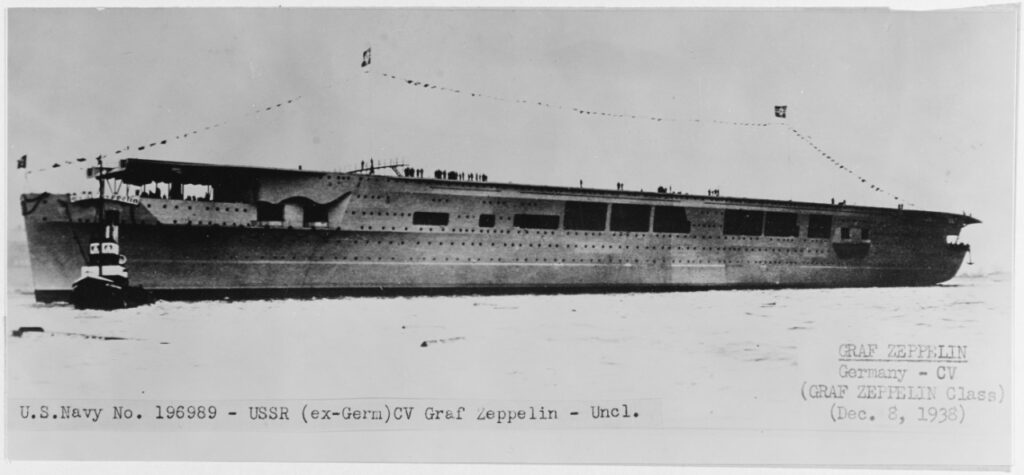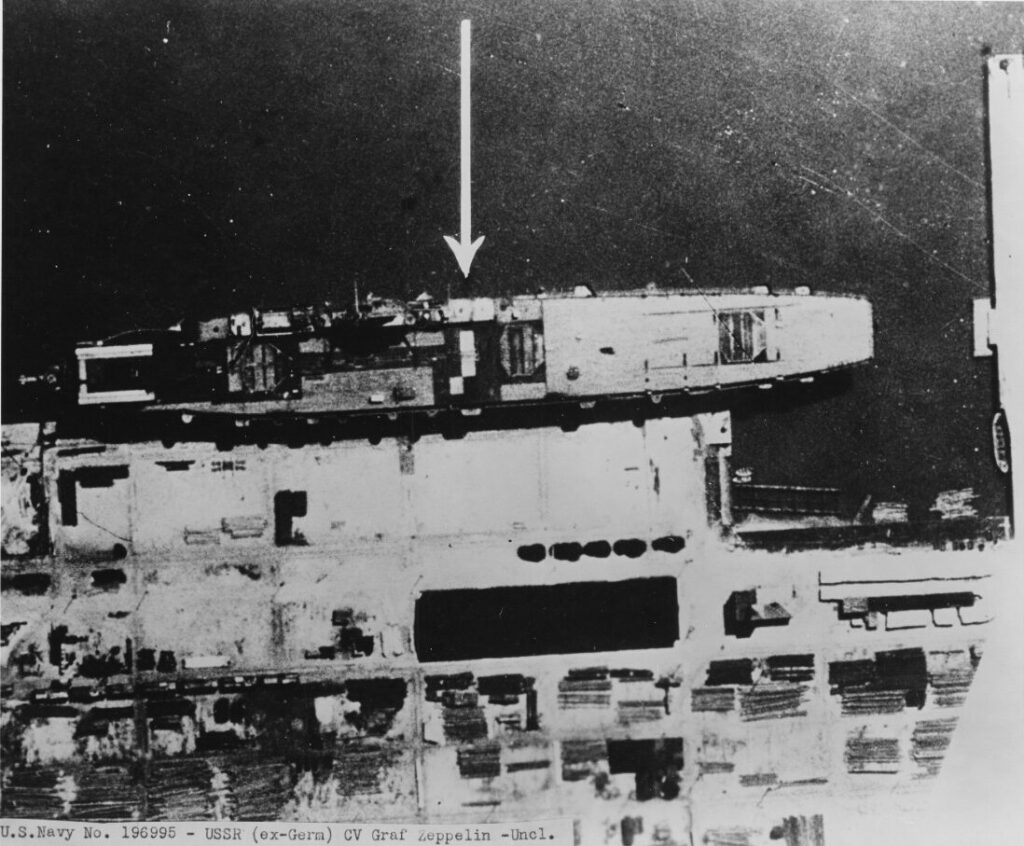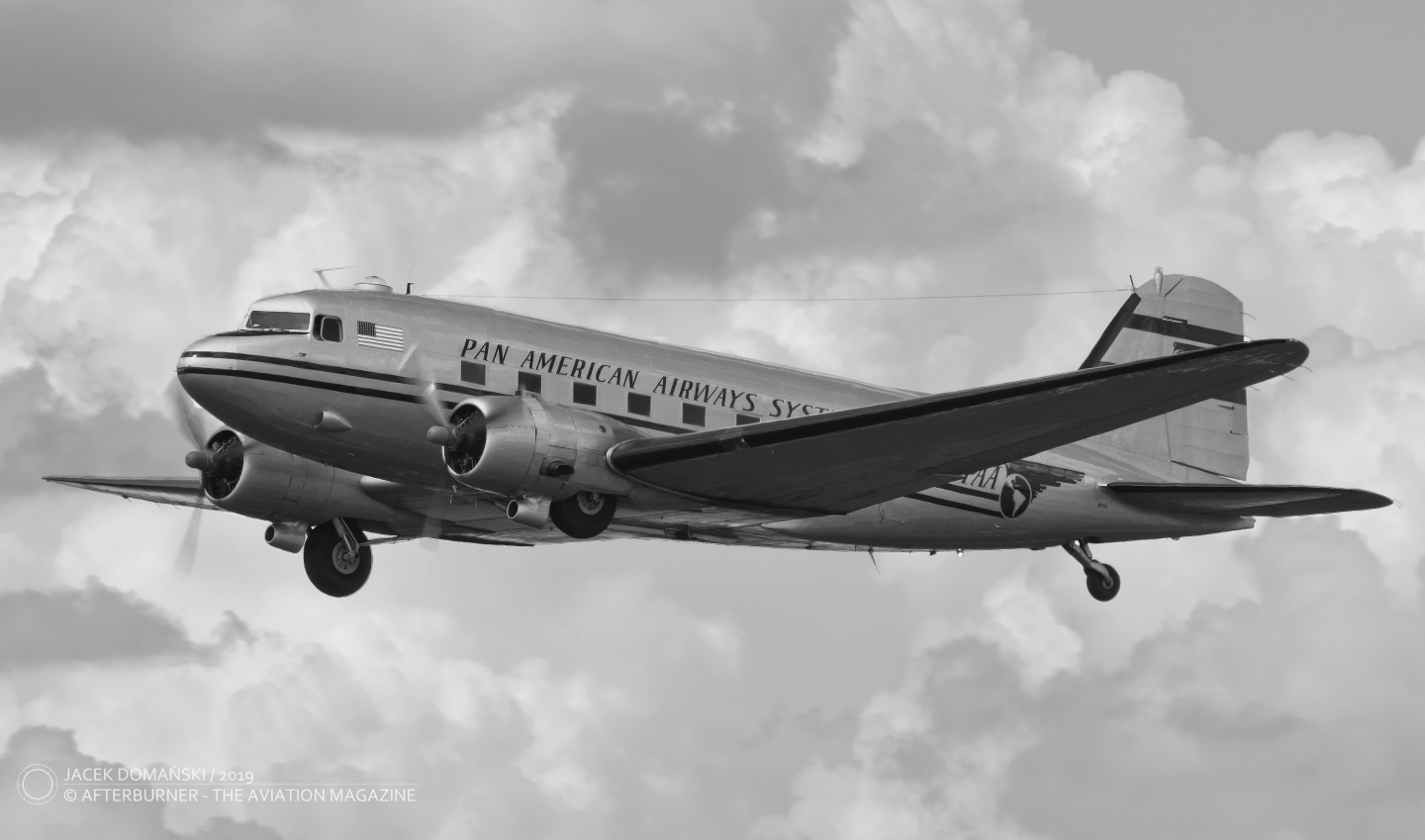 On 8th December 1938, the only German aircraft carrier ´Graf Zeppelin´ was launched in Kiel.
On 8th December 1938, the only German aircraft carrier ´Graf Zeppelin´ was launched in Kiel.
After the Nazis came to power in Germany, expansion of the Kriegsmarine (the German Navy) became one of the priorities of Hitler and his henchmen. Although the navy-related restrictions of the Treaty of Versailles were repeatedly violated by Germany already in the 1920s but now they were totally neglected.
On 18th June 1935, Germany and the United Kingdom signed the Anglo-German Naval Agreement (AGNA) that regulated the size of the Kriegsmarine by fixing its power at 35% ratio of the total tonnage of the Royal Navy. Although the agreement was considered by the British as the first of arms limitation treaties against Germany, in fact it allowed the Third Reich to launch a massive rearmament process and to build a fleet exceeding the current restrictions.
At the time the AGNA was signed the German Navy was so weak that it was expected the aforementioned ratio would be reached not earlier than in the mid-1940s. By that time, Germany wanted to build a strong fleet, equipped with modern ships such as battleships and aircraft carriers.
The idea of building the aircraft carriers for the Kriegsmarine was mostly propagandistic. At the time it was created, the German military authorities had no clear idea how they could use the aircraft carriers during the planned war, which was supposed to be mostly a land war. The only areas that kind of ship could be useful for Germany was the North Sea and the Northern Atlantic, however no tactical tasks were yet clearly defined.
Nevertheless, all sea powers had aircraft carriers, so the Nazi regime adopted an idea that Germany – if the country ever wanted to join that exclusive club – should not be an exemption. As a consequence, the Kriegsmarine simply wanted the carriers, although there was no clear strategic reason why.
Shortly after the AGNA was signed, construction of the first German aircraft carrier began. She was laid down on 28th December 1936 in Deutsche Werke shipyard in Kiel. The ship was named ´Graf Zeppelin´, after Count Ferdinand Zeppelin, the German aviation pioneer and airship designer. It was expected she would be the leading ship of the Graf Zeppelin-class that was expected to consist of four similar carriers.
And then it turned out that building an aircraft carrier without any previous experiences – and also in adverse environment of resource shortages and political intrigue – was a hard task for Germany. Even a deep study on Japanese aircraft carriers made by German shipbuilders was not very helpful, as differences between the expected operational use were too significant.

According to German assessment, there was a high possibility the aircraft carrier may be encountered by the Royal Navy cruisers, thus it was necessary to equip the ship with heavy defensive armour. Consequently, the German shipbuilders created a ´heavy aircraft cruiser´ – the carrier equipped with as much as sixteen 150 mm main cannons and protected by 60 to 100 mm armour.
Another issue with ´Graf Zeppelin´ was her potential air power, as Germany had no experience in building carrier-based aircraft either. Therefore, the aviation component of ´Graf Zeppelin´ was containing naval variants of already existing aeroplanes. Initially, it had to include twelve Junkers Ju 87 Stuka dive bombers, ten Messerschmitt Bf 109 fighters and twenty newly developed Fieseler Fi 167 torpedo bombers. Although the latter aircraft was proved to be a successful design, it was soon cancelled. Finally, the aviation component of the German aircraft carrier was limited to twenty-eight Ju 87s and fifteen Bf 109s.
The abovementioned AGNA treaty did not last long. In September of 1938, Adolf Hitler for the first time officially announced the agreement is no longer ïn effect. Then, in January of the next year, he approved the so-called Plan Z – an impressive modernization plan exceeding the AGNA limits and allocating additional funds for the Kriegsmarine.
The ambitious German plan of expanding the navy included, inter alia, ten battleships, fifteen Panzerschiffe (heavily armoured cruisers), five heavy cruisers, thirteen light cruisers, twenty-two scout cruisers and four aircraft carriers. It seemed that things already gained the momentum, at least on paper.
In reality, the fleet modernization plan collided with political reality of the Third Reich and perennial lack of resources. As mentioned above, Hitler´s future war had to be fight mostly on the ground, therefore the Kriegsmarine turned out to be the third in terms of priorities, after the Luftwaffe (the air force) and Heer (the army). It meant not only the limited allocation of funds but also shortage of steel and other strategic materials, as well as production capacities. It was not long until Hitler, confronted with reality of the Kriegsmarine need for resources, had lost his personal interest in big surface ships for the navy.
Moreover, in terms of the aircraft carriers, the eternal rivalry between the Kriegsmarine and the Luftwaffe exploded with all power. Each party wanted to be the one to have exclusive right to the new weapon and to take credits of possible success. Parallelly, the Luftwaffe authorities did everything to block the construction of ´Graf Zeppelin´. Disputes, political wrangling, personal ambitions and intrigue dominated the German aircraft carrier programme.

The year 1938 marked two significant milestones for the German aircraft carriers. In August of that year, the heavy cruiser ´Prinz Eugen´ was launched, thus freeing the space at Kiel shipyard for keeling the second aircraft carrier. She was temporarily named Flugzeugträger B (English: aircraft carrier B) and was expected to be launched in July of 1940. Then, on 8th December 1938, ´Graf Zeppelin´ was launched, christened by Helene von Zeppelin, the daughter of Count Zeppelin.
Nevertheless, further works on the carrier proceeded slowly. In the mid-1939 Germany experienced increased issues with material supply. The Kriegsmarine was forced to revise the Plan Z and reduce the number of ships. The cuts executed by its commander, Admiral Erich Reader, included cancellation of twelve Panzerschiffe and two aircraft carriers.
On the outbreak of the World War II, ´Graf Zeppelin´ was reported to be 85% ready. Her air wing, Trägergruppe 186, was already formed and began with initial trainings. At that time the schedule envisaged the completion of the first aircraft carrier in the middle of 1940, followed by the second ship by the end of 1941.
However, it was the final success of the German aircraft carrier programme. In spring of 1940, Germany invaded Denmark and Norway. That operation was not included in any previous strategic goals and forced the Kriegsmarine to move most of its resources for protecting the Danish and Norwegian coasts, as well as surrounding waters. There was merely nothing left to continue construction of both carriers.
The works on ´carrier B´ were put on hold already in September of 1939, pending further information on new strategic plans of Germany. In February of the next year, it was clear there were no resources to continue the construction of the second ship. Despite the fact she was completed up to the main deck, it was decided to scrap Flugzeugträger B.
In July of 1940, ´Graf Zeppelin´ was towed from Kiel to Germany-occupied Gdynia in Poland (then re-named Gotenhafen). There, she was used as storage for hardwood and timber. With the German invasion on the Soviet Union, the carrier was towed to Stettin (today Szczecin, in Poland) and after a few months towed back to Gdynia. All the time being just a huge and expensive storage for timber.
In the early 1942, as consequence of Japanese raid on Pearl Harbor and further developments in the Pacific, German naval authorities convinced Hitler about re-launching works on ´Graf Zeppelin´. In addition, new aircraft had to be developed for the carrier.

However, that fact just increased the aforementioned conflict between the Luftwaffe and the Kriegsmarine. The two branches of German armed forces wrangled on that subject for several months. Eventually, in December of 1942, ´Graf Zeppelin´ was towed back to Kiel and placed in a drydock. At that time, she was expected to be completed by the early 1944.
Regrettably for ´Graf Zeppelin´, Hitler´s interest in the aircraft carrier was short-lived. In January of 1943, his disappointment with the German surface navy reached its peak. As a consequence, Hitler ordered to abandon all ongoing projects related to the surface ships and to move all the resources for submarine fleet.
Shortly after, ´Graf Zeppelin´ was moved from Kiel to Gdynia, then Swinemünde (today Świnoujście, in Poland) and finally Parnitz (today Parnica) channel in Stettin. There, on 25th April 1945, ´Graf Zeppelin´ was captured by the Red Army. However, shortly before, the carrier was significantly damaged by the Germans who detonated explosives inside the ship. The damage was so heavy that the Soviets classified ´Graf Zeppelin´ as beyond any repair. Eventually, she was destroyed in August of 1947.
For many years, the exact location where ´Graf Zeppelin´ was sunk by the Soviets remained unknown. Although, for years there were some rumours among Polish fishermen about a huge ship laying on the sea floor, off the coast near Władysławowo. Only in 2006, the Polish research vessel St. Barbara, belonging to Petrobaltic company, confirmed the location. Later survey done by the Polish Navy stated with great probability that the wreckage was in fact ´Graf Zeppelin´.

Cover photo: ´Graf Zeppelin´ photographed on 8 December 1938, soon after launch at the Deutsche Werke Shipyard, Kiel (NH 78303 – courtesy of the Naval History & Heritage Command, cropped)



